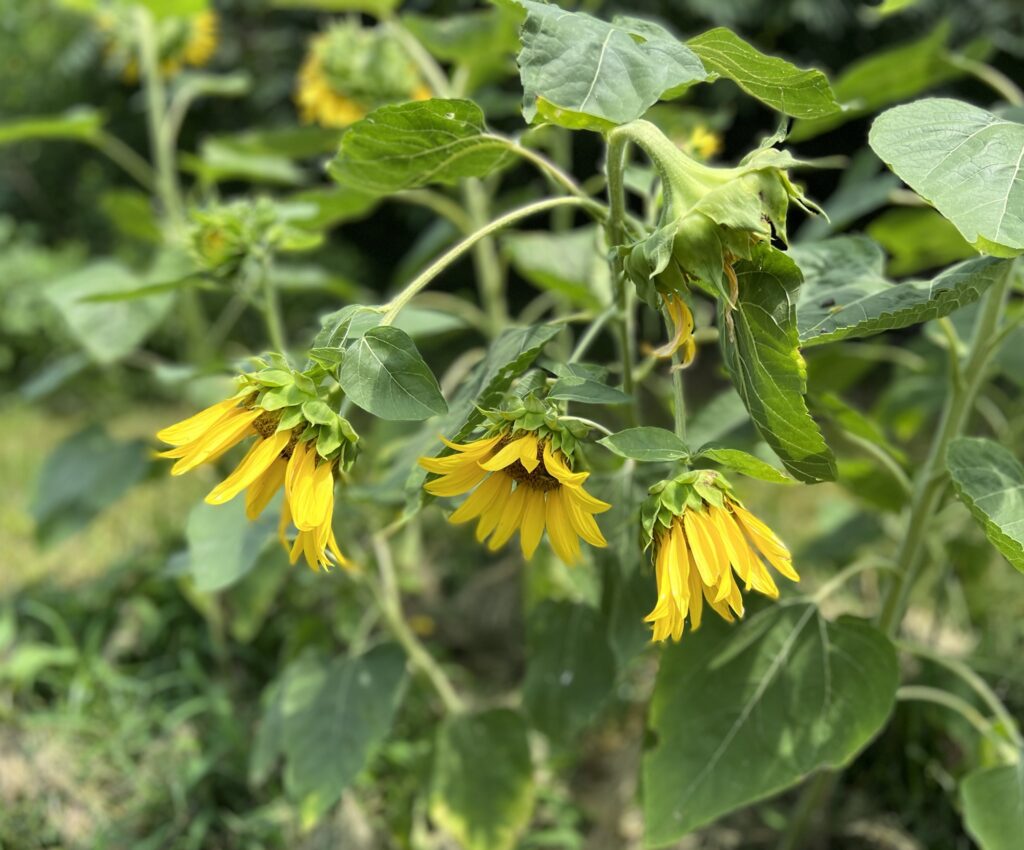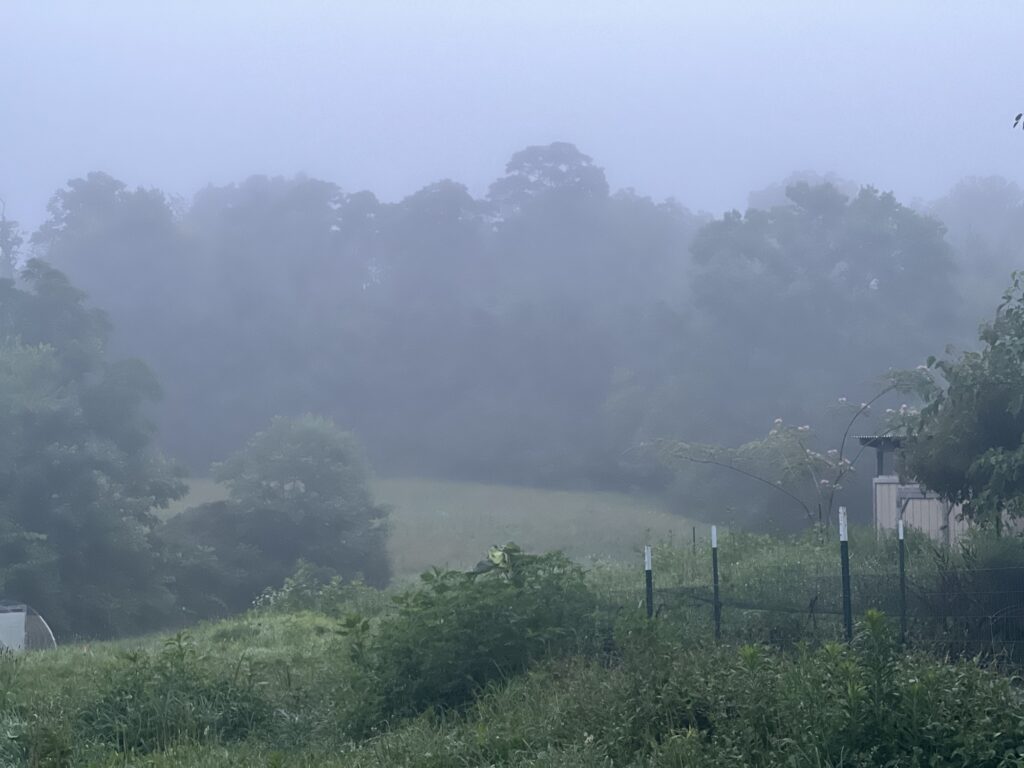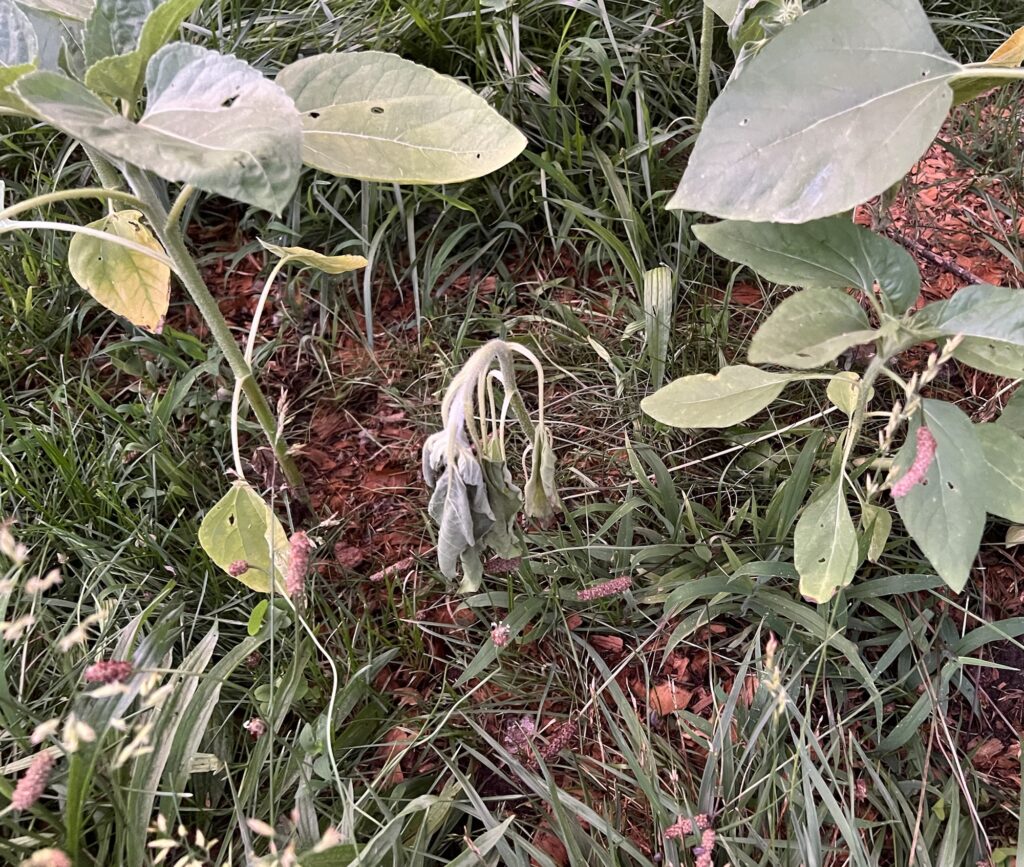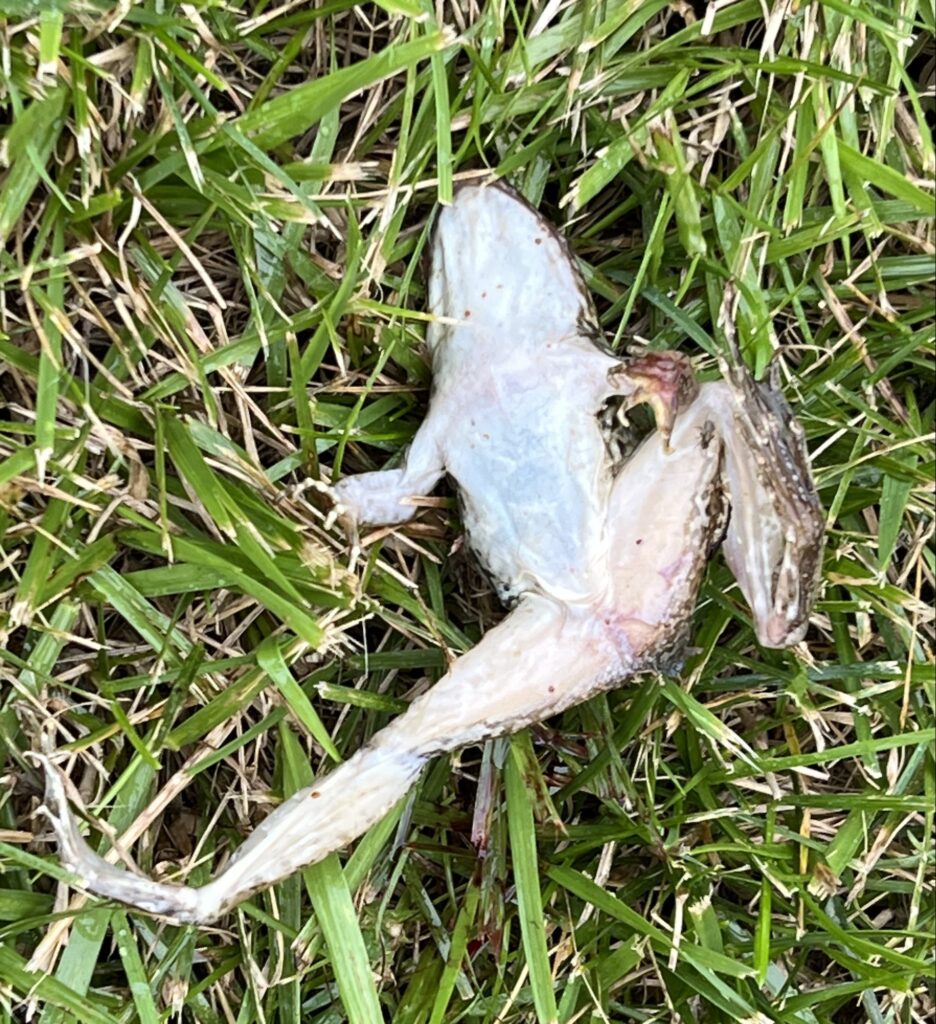
As someone who currently lives in a humid subtropical region, I expect some heat and humidity in the summer. I do. But what I don’t expect is days-long stretches of heat and humidity that reach 110F with the heat index and nighttime temperatures in the 80s – heat waves that necessitate “excessive heat warnings” from the weather service that basically advise rational people to stay indoors. How, exactly, does a farmer do that?
I suppose if I were a factory farmer, with animals in huge metal buildings, I wouldn’t have to (despite my desire not to) pull on all my sun-shielding gear (because the UV index is typically off the charts during these periods, too) and face the heat. Of course, if you’re reading this blog, you already know I’m not that kind of farmer – and making sure the animals are safe and comfortable means that I often am not.
In the severe heat, chickens get electrolyte replacers and frozen water bottles in their waterers to help keep them cool. Pigs get extra water (that they’ll usually spill to create cooling wallows), as do the waterfowl. With shade available, the animals rest during the hottest part of the day, conserving their physical resources. Seems like a very wise move to me.
On the other hand, a small, hands-on (read as no employees) farmer like me is out in the sun, moving tractors – we still have a few juveniles that haven’t been integrated into the main gaggle yet – and refreshing water; refilling water pails; collecting eggs twice a day; and generally checking to make sure everyone is ok. Doesn’t sound too glamorous, does it?

No one wants to post (or maybe see) photos of sweaty, overheated, perhaps even slightly nauseous farmers going about their daily chores. It’s not pretty, it’s not fun, and I suspect it’s just going to get more difficult as the world continues to heat up.
Even with recent (brief) storms that dropped precipitation on us, the sunflowers look heat-stressed, drooping toward the earth, as if to avoid the sun. I’ve been providing extra water in the evening, but some of the smaller ones have died already. This is unusual, as our volunteer sunflowers typically thrive without any supplemental watering, but the early arrival of heat and its damnable duration has made survival difficult for tender young plants.

During these oppressively hot days, I also feel like that wilted plant. I don’t simply travel from my air-conditioned home to my air-conditioned car to my air-conditioned office, completely artificial environments. I see the effects of climate change already, like more damaging weather, changes to the kinds of plants that grow here, impacts to insect life (like far fewer butterflies)…all negative. It’s real, and I see it each day as I spend time on my farm and watch the seasons change.
As a forager, I find, for example, that the Queen Anne’s Lace hasn’t grown well for the past couple of years. The few plants in the pastures are spindly and delicate, unlike the tall, proud stalks and large blooms that I’ve seen in previous years. In fact, it was so abundant a few years ago that I couldn’t have imagined that now, it would be scarce.

If you’re a fan of The (original) Twilight Zone, you know the episode called “The Midnight Sun” where a young female painter is living in a reality where the planet is moving progressively closer to the sun in its orbit. It’s become so hot that people try to flee the city for cooler areas (sounds like climate refugees, doesn’t it?). Those who stay (or are left) behind like her suffer with too little water, food scarcity, a thief stealing the small bit of water she has left, her paintings melting in the heat…and then, in a typical TZ twist, it turns out that she’s actually having a fever-induced dream and the real situation is that the planet has moved further away from the sun in its orbit, so the world is growing unsurvivably cold.
It’s beginning to feel like we’re in that episode of The Twilight Zone – that the world is growing ever hotter, and that, despite the government and media describing these heat events in terms that imply they’re isolated anomalies, this is our new reality. These heat events (heat domes, etc.) have become annual events, almost routine now. And living creatures – plants and animals – are suffering and dying because of the climate crisis.

I’m absolutely flabbergasted there are still some people – maybe a lot of people – on this planet who either pretend not to notice what’s happening with the climate and its devastating effects on life here or who flat-out deny it. We are all frogs being slowly boiled now…and it’s fast approaching a rolling boil.
Read about how economic and social inequities amplify the effects of dangerous heat in this article from the Center for Public Integrity.
